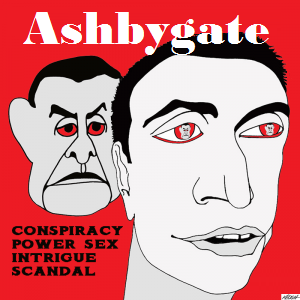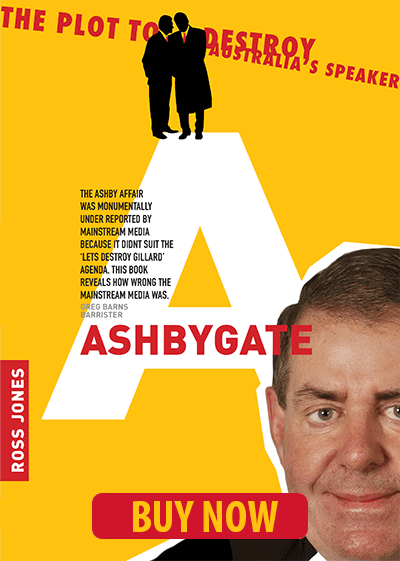A new report from the Australian Centre for Independent Journalism shows News Corp tries to undermine the scientific consensus on climate change — new IA investigative reporter Emily Osmond reports.
It’s hard to believe that just 1.2 per cent of Australians can be classified as disbelievers or strong sceptics of climate science. Not because the evidence for climate change seems ill-founded or fractional — but because of the overwhelming drone of opposition to the science, the policy and the figure-heads supporting it.
It is, therefore, surprising to discover that not only do most Australians believe the climate is changing but most Australians also believe that Australia should take action on climate change without waiting for global consensus.
Australian beliefs are in line with 97 per cent of the world’s published climate scientists and the world’s major scientific organisations. This includes the position taken by the world’s leading scientific, policy-neutral, intergovernmental body for the assessment of climate change: the Intergovernmental Panel on Climate Change (IPCC).
The IPCC reported most recently in 2007. It drew on more than 500 lead authors and 2,000 expert reviewers. It built on the work of a wide scientific community and was submitted to the scrutiny of delegates from more than one hundred participating nations. The IPCC Forth Assessment Report concluded that warming of the climate system is unequivocal, and that most of the observed increase in global average temperatures since the mid-20th century is very likely due to the observed increase in anthropogenic greenhouse gas concentrations.
Australian opinion is also in line with the Millennium Ecosystem Assessment (2005), which was written by more than 1300 natural and social scientists from 95 countries; the Stern Review (2006), the most comprehensive economic review ever carried out on climate change; and the Garnaut Climate Change Review (2008), an independent study of the impacts of climate change on the Australian economy. The three reports argue that immediate and significant action is required by governments to avoid irreversible and damaging impacts to the Earth’s sustainability.
In fact, no scientific body of national or international prominence has maintained an opposing opinion.
Furthermore, the United Nations Framework Convention on Climate Change states that where there are threats of serious or irreversible damage, lack of full scientific certainty should not be used as a reason for postponing such measures — rather, parties should take precautionary measures to anticipate, prevent or minimize the causes of climate change and mitigate its adverse effects.
Yet, the scientifically rigorous international consensus on climate science and Australia’s necessary response has been misrepresented, ignored or denigrated by some of our nation’s leading newspapers.
A study of the coverage of the carbon policy across ten major Australian newspapers, released this month by the Australian Centre for Independent Journalism (ACIJ), found that that negative coverage by News Ltd’s newspapers of the Gillard government’s moves to price carbon outweighed the positive by 82 per cent to 18 per cent.
This is particularly inexplicable, considering the same study found that Fairfax demonstrated significantly more balance in its coverage of the policy, with positive articles outweighing negative ones by 57 per cent to 43.
These asymmetry in the coverage has not gone unnoticed.
Greens leader Bob Brown has publically argued that the coverage of carbon pricing policy by some Australian newspapers
“is commentary, is not balanced and is not news”.
He also criticized The Australian newspaper for actively opposing action on climate and for failing to be responsible and constructive.
Commentary is designed to provide an opportunity for voices outside the paper, particularly those of specialists from within their fields. Why, then, did the ACIJ study find that journalists or regular columnists wrote 75 per cent of opinion pieces on the carbon policy across these ten newspapers in the first half of this year?
The number of sources drawn upon commonly correlates to the objectivity and diligence of an article. Yet the same study by the ACIJ found that, when discussing the carbon policy, just 11 per cent of news and feature articles quoted no source, 30 per cent quoted just one, and only 42 per cent included more than two sources.
You might think that a topic so robustly situated in the realms of science would require insight from many voices within that field. Yet – together with unions, NGOs, think tanks, activists, and members of the public – scientists and academics made up 17 per cent of all sources. And the Australian Greens were 5 per cent, despite their pivotal role in policy negotiations.
In contrast, climate science critics Andrew Bolt and Terry McCrann have published more opinion pieces on carbon pricing policy in Australia than any other commentators.
News Ltd claim Bolt is its best-read blogger. Bolt does not have a background or qualification in policy, economics or science, yet has been published across the vast stable of News Ltd newspapers – which dominate 70 per cent of Australia''s metropolitan newspaper market — saying that the Gillard government’s carbon pricing policy is “a giant fraud that mere spin cannot hide” and that “the world isn’t warming as she thought”.
In its November submission to the Independent Inquiry into Media and Media Regulation this year, News Ltd stated that
“...the value of newspapers to readers is the professional assessments and judgments brought by the editorial team and imparted to the reader”.
News Ltd also asserted that
“...a newspaper has the editorial discretion to assess the strength or credit of views and decide the weight to give some views and not others”.
The weight given to largely unqualified and minority voices not only contradicts the Australian Journalists Association’s code of ethics – to not suppress relevant available facts, or give distorting emphasis – but also News Ltd’s own Editorial Code of Conduct – to try always to tell all sides of the story in any kind of dispute – while at the same time diminishing the cumulative domestic and international consensus on climate science. That is not providing value for readers.
The media’s portrayal of issues can radically affect public opinion. In fact, during a sitting of the independent media inquiry, outgoing News Ltd boss John Hartigan acknowledged News Ltd has the ability to
“...mobilise pressure on government on behalf of [its] audience”.
With News Ltd’s publications reaching 61 per cent of all Australians aged over 14 years, its opinion-heavy, anti-carbon tax, stance must resound with some effect in, at least, pockets of the Australian community.
The recent CSIRO study, Australia’s views on climate change, found that the percentage of Australians who believe climate change is happening and that it is caused by human activity has declined over the past three years.
Similarly, the Lowy Institute’s annual survey of 1,002 Australians found that support for the most aggressive form of action to address global warming had slipped five points from last year.
News Ltd has proposed in its submission to the independent media inquiry that Australia’s cross‐media regulations should be abolished and that additional regulation of ownership limits to the already “over‐regulating” Broadcasting Services Act (1992) should be rejected. It argued that
“a newspapers [sic] role is to assist its readers to be informed about a range of views so they are in a position to decide for themselves what the political ‘truth’ is”.
But when a news company denigrates international scientific consensus with unqualified voices from within its own organisation using scarce and selective sources and to give a particular viewpoint 82 per cent of the weight, this is not only determining the ‘truth’ in its readers minds, but ensuring its own views become accepted.
News organisations must be held to report the news, not to shape the bounds of reality.









